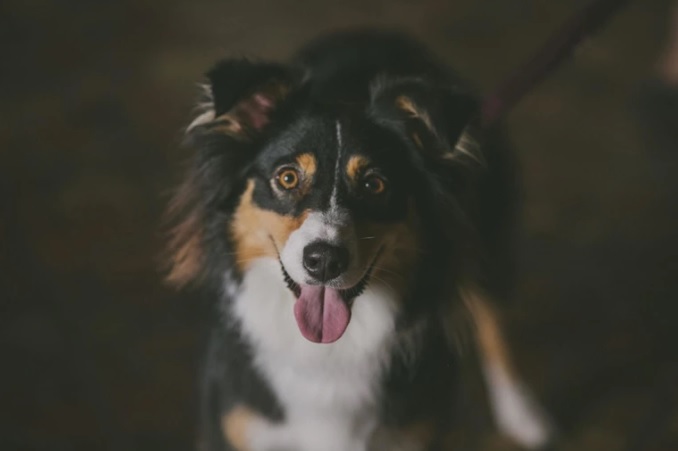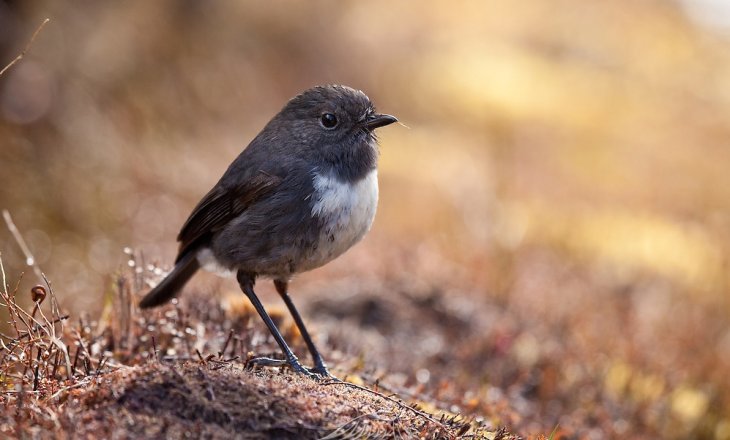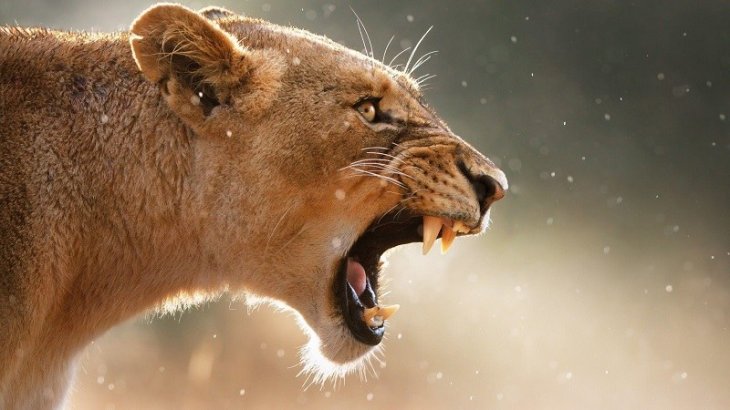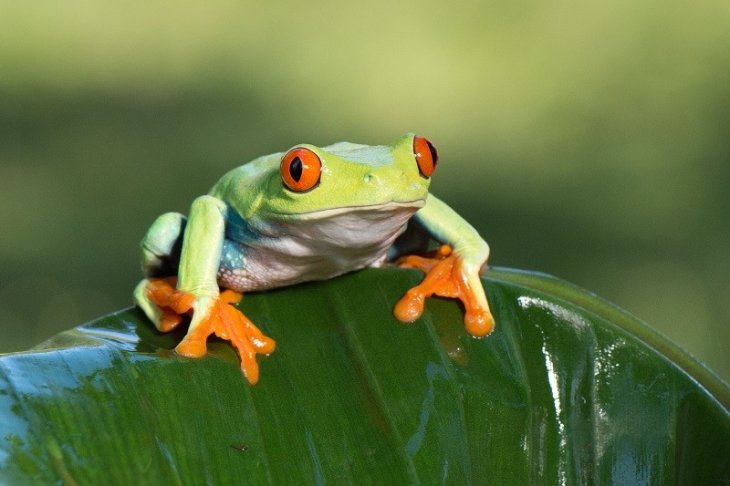You Wouldn't Believe That These Animals Can Do Maths (Part 1)
Harin - Jun 27, 2019

Humans are not the only species that can do maths. Animals have been proven to carry the abilities to do it on a daily basis as well.
- A Math Formula Tells Us How Long Everything Will Live
- Shakuntala Devi Awarded Guinness World Records’ Fastest Human Computation Certificate After 40 Years
- Would You Rather Run Away From A Lion, Or Would You Rather Swim Away From An Alligator?
In the 19th century, Wilhelm von Osten, a German math teacher, believed that animals, just like humans, could also do maths. In order to back his belief, Von Osten taught a horse how to solve basic math equations by scraping its hooves on the ground to represent numbers. One stroke for one. And two strokes for two. Von Osten then took the horse called Clever Hans to different towns to solve math equations in public. However, Von Osten didn’t realize that Clever Hans couldn’t do maths. He just simply pawed his hooves on the ground until he saw his overjoyed reaction from his master.
Although science has now evolved beyond the great demonstrations of Osten, the question still lives on. Can animals actually have higher-level thinking? In fact, research has proved that not only animals can do maths, but they even do it regularly.
Dogs Counting Treat

Calculations and quantification are the two most basic forms of mathematics. Therefore, any animal capable of counting is mathematically inclined. So in order to figure out whether animals can deal with math, we first need to ask if they could quantify and count.
A 2002 study on dogs suggested that although angular momentum calculation might not be a possible task for dogs, they can actually count. For the study, eleven pet dogs were placed in front of a screen. The researchers put a doggy bowl filled with a large treat on the other side of the screen. They would let the dog see the treat, then behind the screen, they placed a single treat inside the bowl but occasionally slipped the third treat in.
The dogs would then stare at the treat bowl like it was confused how the human put one extra treat in there, but instead, two appeared.
While this may not prove the counting ability of dogs, it surely suggests that they do have the ability for quantitative reasoning.
Sedona-the counting Collie

This is another experiment to prove the counting ability of canines. Professor Krista Macpherson at the Canada’s University of Western Ontario conducted an experiment to test out dogs’ counting abilities. The test was carried out on Sedona, a young collie. She arranged two magnetic screens. And on the board, she put several magnets. In order to get a treat, Sedona had to push the board, which had more magnets. The board was filled with assorted-size magnets, so it was impossible for Sedona to base on the surface area that the magnets occupied to judge the boards.
Macpherson gained enough evidence after 700 tests. Sedona, after some issues, succeeded in knock over the right board over and over again. Too many times that it proved to be not a random chance. Although Sedona had trouble differentiating eight from nine, she could sort out seven from three or four or five. And remarkably, she improved with each test. Sedona proved that not only animals could do maths; they could also become better at it with experience and training.
Birds Can Count, Too

Similar to dogs counting snacks, it has been proved that birds also have counting abilities. Scientists from New Zealand conducted a study similar to the counting treat one with New Zealand robins to test whether the birds could realize that there was one worm went missing from their meal. Many things were also tested, but the scientists took note of how the robin reacted once they got fewer or more worms. The birds became eager and excited when they got extra worms while they lost their temper if there were fewer worms.
This suggests that birds have not only comprehensive math skills but also the ability to remember quantity. They can also expect the appearance of certain numbers at a consistent rate. For those who don’t know, pattern recognition is considered quantitative reasoning’s advanced form. And unlike Sedona, which is a specific animal capable of doing maths, this is a whole species.
Lions on the Prowl

Lions are known as territorial creatures. To spread their superiority across the Savana, they take down their rival pride. However, many scientists figured out that the lions normally attack those smaller than them. Since they are aware of their numbers as an advantage, they would strike fast and hard on more vulnerable targets.
Karren McComb at the University of Sussex decided to conduct an experiment with five Tanzanian lionesses. The lionesses were placed in a faux-environment. And then, at the back of underbrush, McComb played the roaring sound from three lions which were from the same species. The lionesses knew they had the upper hand due to their superior numbers, strike down. As McComb repeated the experiment, she discovered that, once the lionesses were aware that the roaring sounds came from more than five lions, they put on their guard. However, the experiment took note that it became harder to differentiate one roar from another when there were more than five roars. Experiments with chimps, monkeys, hyenas also yielded success.
This proves that these creatures do have comparative thinking skill as they can compare the enemy numbers with their own. So the lionesses did maths to ensure a militaristic victory.
Frogs Can Do Math As Well

Frogs do maths to procreate. Frogs which are often pointed at as unintelligent amphibians can actually count. And they need to do it for reproduction.
Frogs from different species can have a similar appearance. Therefore, it is difficult for them to search for compatible partners for reproduction just by looking. Instead, they rely on the pulses located in their croaks for identification. So the frogs count the number of pulses to find compatible mates that are of the same species.
>>> Indian Mathematician Srinivasa Ramanujan And His Famous Quotes
Featured Stories

Features - Jul 01, 2025
What Are The Fastest Passenger Vehicles Ever Created?

Features - Jun 25, 2025
Japan Hydrogen Breakthrough: Scientists Crack the Clean Energy Code with...

ICT News - Jun 25, 2025
AI Intimidation Tactics: CEOs Turn Flawed Technology Into Employee Fear Machine

Review - Jun 25, 2025
Windows 11 Problems: Is Microsoft's "Best" OS Actually Getting Worse?

Features - Jun 22, 2025
Telegram Founder Pavel Durov Plans to Split $14 Billion Fortune Among 106 Children

ICT News - Jun 22, 2025
Neuralink Telepathy Chip Enables Quadriplegic Rob Greiner to Control Games with...

Features - Jun 21, 2025
This Over $100 Bottle Has Nothing But Fresh Air Inside

Features - Jun 18, 2025
Best Mobile VPN Apps for Gaming 2025: Complete Guide

Features - Jun 18, 2025
A Math Formula Tells Us How Long Everything Will Live

Features - Jun 16, 2025
Comments
Sort by Newest | Popular